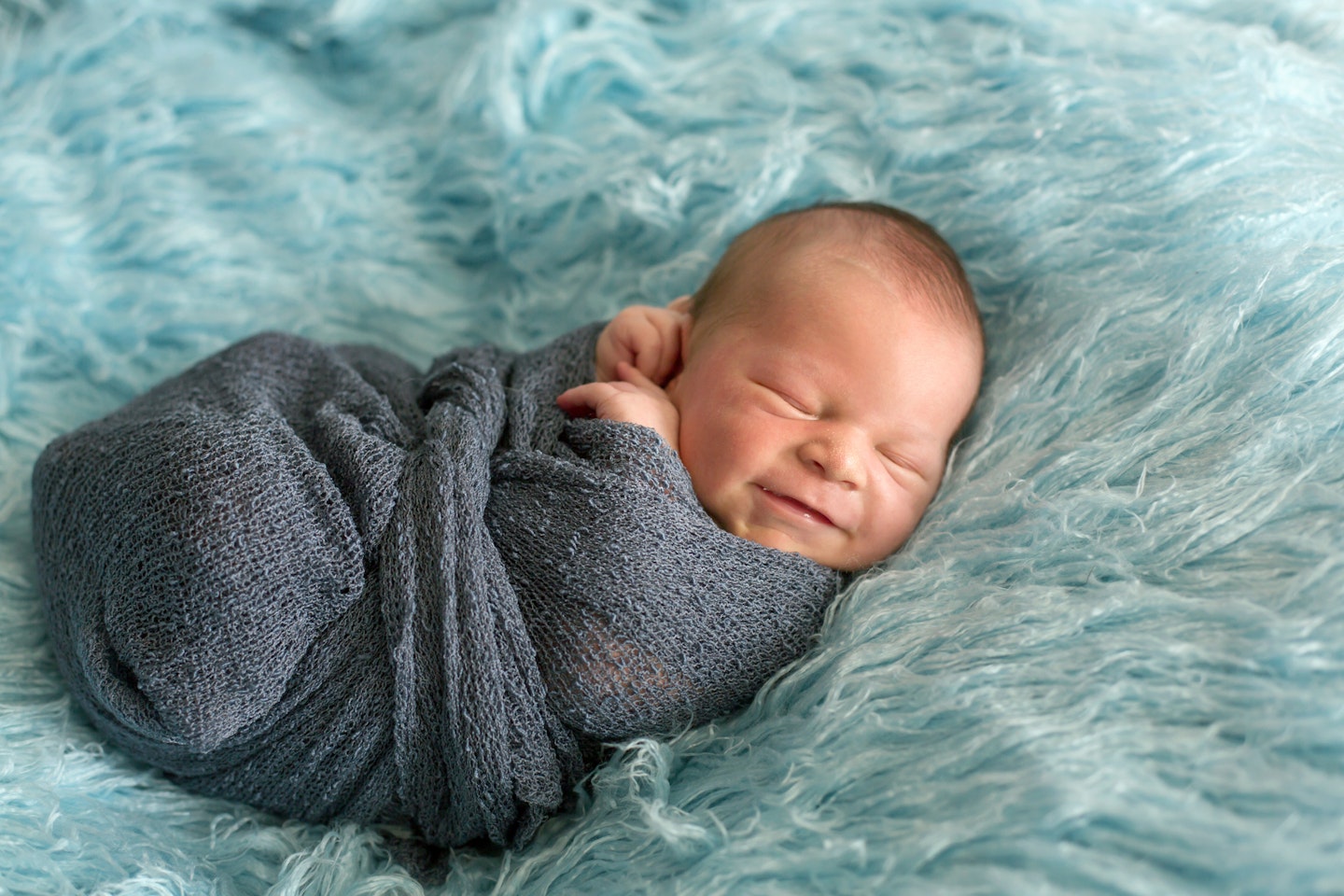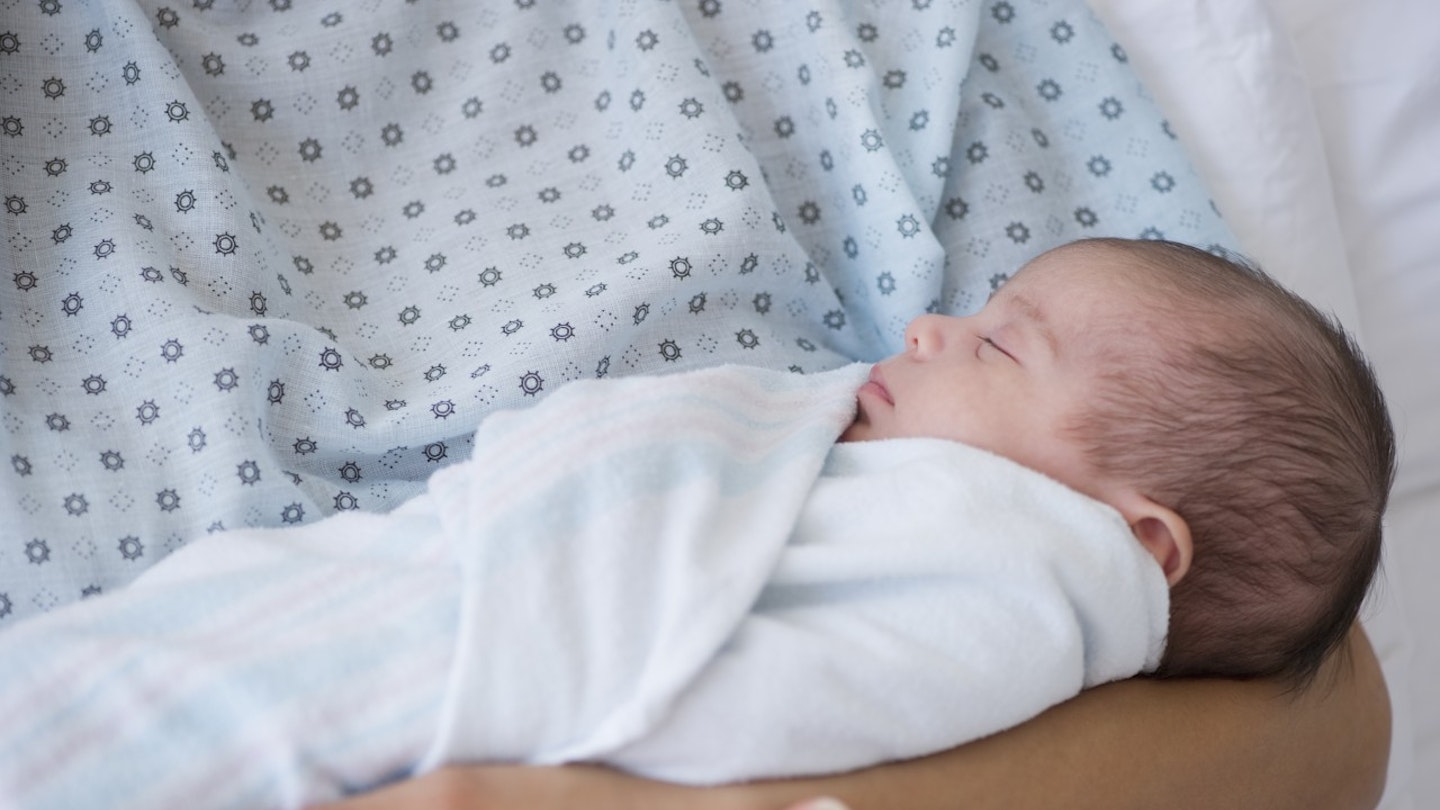You may have heard that swaddling can be an effective method of helping to get your baby to sleep, but how do you do that with just a square of fabric? If you're trying to get a baby to sleep, that last thing you want to be doing is Googling "how to swaddle a baby". So with the help of our experts, we've put together a guide to swaddling with everything you need to know, including how to swaddle a newborn, the advantages and disadvantages of swaddling a baby, and most importantly, how to swaddle safely.
We spoke to Alison Scott-Wright, Sleep Consultant and author of The Sensational Baby Sleep Plan, and Midwife Pip to learn how to swaddle your baby safely, and get the answers to all your swaddling questions.
What is swaddling?

Swaddling is a practice that’s been carried out for thousands of years and can be beneficial for your baby, making them feel more secure. It's a traditional technique, and involves wrapping your baby in a light, breathable blanket.
Midwife Pip notes that "swaddling your new baby can be a lovely way of supporting them to transition to life outside the womb and settle them to sleep because it allows them to feel safe, cosy, warm." Not only does it help keep baby feeling safe and warm, swaddling can prevent their tiny arms and legs flailing about during sleep which can trigger their startle reflex (also known as the Moro reflex), potentially causing them to wake.
While swaddling can be beneficial, both Pip and Alison advise against wrapping your baby too tightly. "Wrapping your baby in a swaddle mimics the feeling of security he felt when in the womb and can really help when settling a new baby," says Alison. "However, even in the womb, babies can move and turn so it's important that the swaddle isn’t too tight or restrictive as this could cause problems within the hip joints."
The best baby swaddle blankets tend to be made from 100% jersey cotton as the natural elasticity in this material allows your baby to move, flex and stretch. "You can buy ready-made swaddles, and most of them are made in this jersey fabric and are quite simple to use," says Alison.
What are the benefits of swaddling?
Similar to using a baby sleeping bag, a lot of parents find that swaddling works for them and their baby, however experts are still unsure whether the benefits of swaddling are scientifically accurate. It’s thought that swaddling may:
• Help settle your baby for sleep
• Help your baby sleep longer
• Can help prevent your baby being woken by the ‘moro reflex’ or startle reflex as it's also called
• Can make your newborn feel safe and secure, by mimicking the snuggly environment of the uterus
Disadvantages of swaddling a baby
While swaddling is safe when done right, there are some aspects to be aware of and look out for when you're swaddling your baby.
Swaddling too tight: The swaddle needs to be snug but not too tight. Your baby's legs should still be able to move and they should be able to breathe comfortably.
Overheating: It's important to make sure that your baby doesn't overheat when they're swaddled. You should never use any other blankets or coverings with a swaddle, and make sure they're not wearing too many layers. Check their face doesn't become flushed, damp or warm to the touch.
Hip dysplasia: - If baby is swaddled too tightly, it can impact the formation of their hip joint so you should always make sure your baby’s legs can move freely.
How to swaddle a baby safely: Step by step guide
• Step 1: Lay out your swaddle
Lay out the swaddle on a flat surface and place your baby on his back, with the top hem of the swaddle under the back of his neck. If you don’t have a special swaddle, fold the cloth into a large triangle, with the point of the triangle facing towards you.
• Step 2: Position your baby
‘Fold his arms across his chest and NEVER swaddle with arms down by his sides,’ says Alison. ‘This is far too restricting and could be dangerous. Make sure his legs are also slightly bent at the hips in a ‘frog’ position and leave the material loose enough so that he can move them to prevent hip dysplasia.
• Step 3: Wrap up your baby
With your left hand, hold his arms in place whilst reaching across with your right hand to pull over the left side of the swaddle over baby's left arm and chest. As you pull it over, cover his hands with the hem of the swaddle going right up under the chin. Keep the swaddle taut and bring it over his left side and shoulder and tuck it round, under his back.
• Step 4: Tuck in the bottom
Flip the material at the bottom of the swaddle up and over the feet, tucking the loose ends around the back of the legs,’ says Alison. Make sure his legs are slightly bent at the hips in a ‘frog’ position and leave the material loose enough so that he can move them to prevent hip dysplasia.
• Step 5: Secure the swaddle
Now with your left hand, pull over the right side of the swaddle over baby's right arm and chest and tuck under the right side.
• Step 6: Final check
Just check the swaddle isn’t too tight and that your baby’s legs can wriggle freely.

How to choose the right swaddle
Material
As mentioned, jersey is a perfect material for a swaddle as it allows enough stretch and movement for your baby. Cotton, bamboo and muslin are also ideal as they are breathable and soft.
Size
Swaddles come in a range of sizes and shapes, but most are between 40 and 48 inches square. Some wraps are designed specifically for newborns while others are suitable for older babies so the wrap you choose will depend whether you're planning to swaddle a newborn or an infant.
Type
While some swaddles are simply a square of fabric, others are more similar to sleeping bags and can be easier to use if you're worried about safety. These swaddle bags allow you to pop baby's arms into the bag and use fasteners to control the size so they're easier to use but provide less flexibility in terms of customising the size.
When moving on from a swaddle, a baby sleeping bag can be a great next option ensuring the correct size and tog is used. As Pip notes, "these are an easy and comfortable option to continue to support your baby's sleep. Tommee Tippee offer a brilliant selection of sleepbags in a range of different togs, as well as an All-Season Sleepbag which can be used throughout the year. I used these with both of my little ones and they're perfect for transitioning from swaddle to sleep bags."
Swaddling FAQs
Is it safe to swaddle your baby?
Yes, it can be a great technique to help your baby sleep and keep them calm, when done correctly. However if swaddling is done incorrectly it can be dangerous and lead to:
Hip dysplasia - when your baby’s hip joint doesn’t form properly and is caused by excessive tight swaddling that restricts their leg movement. This is why you should always make sure your baby’s legs can move freely, once you’ve swaddled them.
Overheating - swaddling your baby too tightly or in a thick blanket could cause this. Check your baby is at a good temperature for sleeping before swaddling them. Signs that your baby may be too hot include flushed skin or cheeks that feel hot and sweaty or damp skin and hair.
The Lullaby Trust don’t advise for or against swaddling, but they do urge parents to follow some simple guidelines:
• Swaddle using thin materials.
• Do not swaddle above baby’s shoulders.
• Do not swaddle too tight.
• Always put a swaddled baby to sleep on their back and never on their front or side.
• Regularly monitor baby’s temperature to ensure they do not get too hot.
• Use a think muslim or cotton sheet to swaddle your baby and don't put additional bedding on top of them (could cause them to overheat)
Can you breastfeed a swaddled baby?
This is not recommended. Your baby gets hot while breastfeeding, therefore doing this while they are swaddled could lead to them overheating. Also, as swaddling restricts your baby’s movement, it can prevent them being able to get into a comfortable breastfeeding position.
How long should babies be swaddled for?
If you're wondering how long you should swaddle a newborn, this is likely to be from birth until they show signs of trying to roll over. At this point you should stop swaddling and move them into a baby sleeping bag.
Does swaddling prevent SIDS?
Experts still aren't 100 per cent sure on this, however this can be determined by your baby's age. Swaddling will make it difficult for your baby to roll over in the first few months, helping them stay on their back and in turn reducing the risk of SIDS. However, once your baby has mastered the roll over, it can have the opposite effect. As their arms are restrained from the swaddling, it more difficult for them to move their heads if they roll over onto their tummy, increasing the risk of suffocation. It's therefore important you stop swaddling your baby once they show signs of rolling over.
Is swaddling safe in NHS?
The NHS notes that swaddling should be carried out correctly to ensure safety and that swaddled babies should always be put to sleep on their backs and that swaddling should stop when they show signs of being able to roll. They also advise against using any other blankets or coverings, and making sure baby is at the right temperature and doesn't get too hot.
Midwife Pip agrees, saying "once you have practiced your swaddling technique a few times it really is quite simple to do but remember to not swaddle too tight, always place your baby on their back to sleep, don't add any extra blankets or layers over a swaddled baby and stop swaddling once your baby shows signs of starting to roll."
About the expert
Alison Scott-Wright is the UK’s leading baby, toddler and child sleep expert who also specialises in the management of ‘colic,’ acid reflux, feeding difficulties, dietary related intolerances and food allergies. She's the author of two bestselling books; The Sensational Baby Sleep Plan and The Sensational Toddler Sleep Plan and has worked hands-on with families for over 25 years, sharing her knowledge and expertise and most importantly bringing sleep to thousands of homes.
Midwife Pip is a truly passionate midwife and advocate for the profession, bursting with knowledge. Pip is an experienced, practicing Midwifery Sister, MSc graduate, founder of Midwife Pip Podcast, Hypnobirthing and Antenatal Educator, co-author of published research and very importantly, a mum.
Aimee Jakes is Bauer Media's Trending Content Editor where she specialises in beauty, wellness, fashion and fitness content for Grazia, Closer and Heat. Previously, Aimee was the Mother&Baby Digital Editor where she started the online community #mumtribe and interviewed celeb parents from Tom Daley to Jacqueline Jossa.
